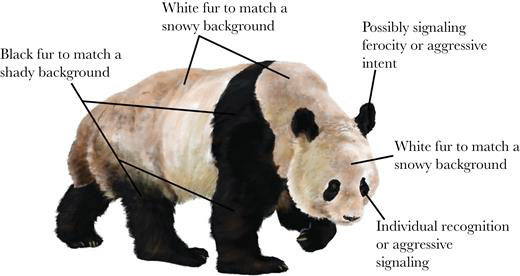Pandas' dark eyes can be deceiving
With their round heads, bamboo diet and mild temperament, pandas are one of the animal kingdom’s most unique creatures. Need more proof? It’s all there in black and white.
Cal State Long Beach assistant professor Ted Stankowich and student assistants joined a team of biologists from UC Davis that recently looked into why the colors of pandas are in stark contrast and what it means.
In a four-year study, the scientists broke down thousands of color grids and images and compared the colorings of 195 carnivore species and 39 bear subspecies, then matched their patterns against their environments.

Stankowich said the team concluded that the panda’s patterns serve as both camouflage and communication. Their findings were first published in Behavioral Ecology.
The research showed that carnivores who have white or light fur on their bodies and their necks tend to live in more snowy environments. Carnivores who have dark or black shoulders tend to live in a forest environment. Temperature made little difference.
But pandas? China, where they reside, has both climates and the pandas’ coloration reflects how active they are year-round in both environments. Their white heads and bodies blend in with the snow, while their dark arms and legs are hidden in the shade.
The scientists from CSULB and UC Davis suggest that the panda’s stark coloration stems from its solitary diet of bamboo, which lacks enough nutrients that enable other bears to hibernate or go dormant in the winter. This leaves the panda having to travel great distances year-round in varying habitats, from snowy conditions to shaded forests.
“We think they are trying to compromise or balance their coloration pattern to be cryptic or camouflaged in both types of environments,” Stankowich said. “We think this is an attempt to hide themselves year-round in the environments they encounter.”
The panda’s face, with its dark circles around the eyes, and black ears convey a different sort of message. The scientists concluded pandas communicate with these features.
“The ears might be signaling how ferocious or dangerous or pugnacious they are, how willing you are to defend yourself,” Stankowich said.
He said when they look across various species, animals with darker ears tended to be more ferocious or dangerous.
“They may be using them as a signal (by moving them) and it may accentuate the face in a way that makes them appear to be more ferocious. The eyes may be used to signal that as well.”
Stankowich said the pandas’ eye patches vary in shape and size, and previous research has suggested that it correlates with how dominate the bear behaves. The patches also help pandas recognize each other.
Related






